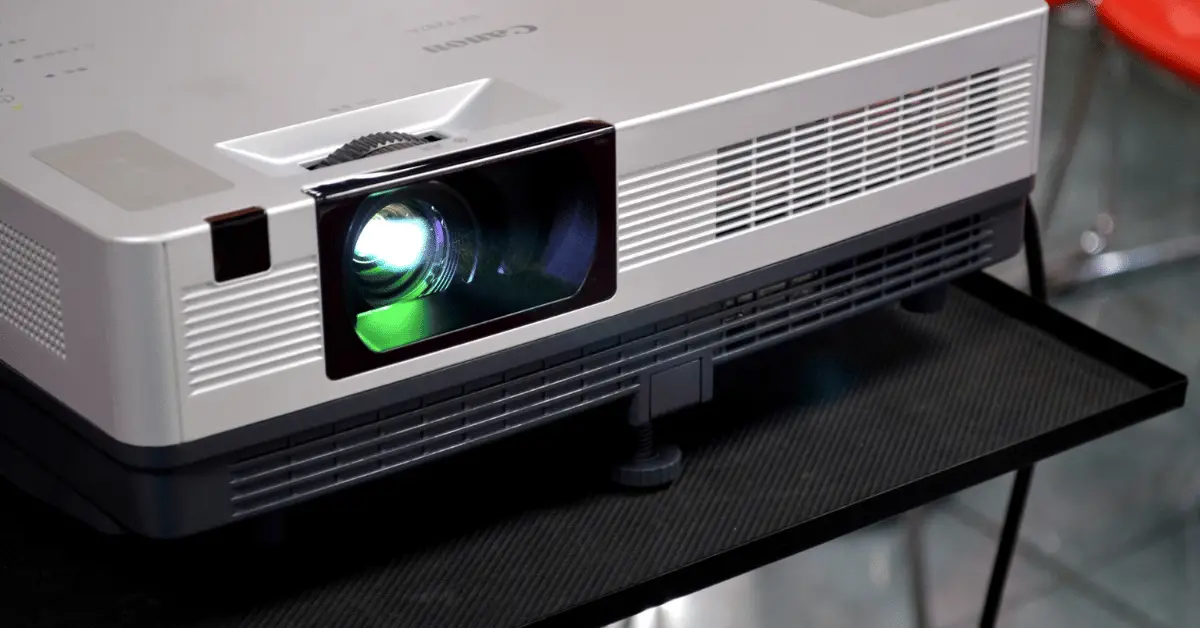Projector screens are an essential component of any projection setup, whether you’re using it for business, education, or personal purposes. However, one of the common issues that users face with projector screens is curling or wrinkling, which can affect the quality of the image and make it difficult to view. If you’re experiencing curling on your projector screen, don’t worry – there are several steps you can take to prevent or fix it. In this article, we’ll explore some of the most effective ways to stop projector screen curling, including adjusting the tension, using a weighted bar, or applying heat. By following these tips, you can ensure that your projector screen remains flat and provides a high-quality image for your viewing pleasure.
Table of Contents
How To Stop Projector Screen Curling?
A projector screen is an essential component of any projection setup, and its proper functioning is crucial for a high-quality image. However, one common issue that projector screen users face is screen curling or wrinkling, which can affect the quality of the image and make it difficult to view. Fortunately, there are several steps you can take to prevent or fix projector screen curling. In this article, we’ll explore some of the most effective ways to stop projector screen curling.
- Adjust Tension
The first step to preventing projector screen curling is to adjust the tension of the screen. A screen that is too loose or too tight can cause curling, so you need to find the right balance. To adjust the tension, use the tension control mechanism on the screen’s casing. Make sure to follow the manufacturer’s instructions on how to adjust the tension, as different models may have different mechanisms.
- Use a Weighted Bar
Another effective method to prevent screen curling is to use a weighted bar. A weighted bar is a long, thin metal bar that is placed at the bottom of the screen to keep it taut. You can purchase a weighted bar from an audio-visual equipment supplier or create your own using a PVC pipe filled with sand or gravel. Simply attach the bar to the bottom of the screen using hooks or clips.
- Apply Heat
Applying heat to the screen can also help remove wrinkles and curling. Use a hairdryer or heat gun to blow hot air onto the screen while gently pulling on the corners. This will help stretch the screen and remove any wrinkles. Be careful not to overheat the screen, as this can damage it.
- Store the Screen Properly
Proper storage of the screen can also prevent curling. When not in use, store the screen in a dry, cool place away from direct sunlight. Avoid storing the screen in a tightly rolled position, as this can cause permanent curling.
- Use a Tensioned Screen
If you’re looking for a more permanent solution to screen curling, consider investing in a tensioned screen. A tensioned screen uses a motorized system to keep the screen taut at all times, preventing curling and wrinkles. While tensioned screens may be more expensive than traditional screens, they provide a higher quality image and require less maintenance.
How To Rotate Projector Screen?
Rotating a projector screen can be necessary in certain situations, such as when you need to display a portrait orientation image or when the projector is mounted at an angle. Here are the steps to rotate a projector screen:
- Adjust the Mounting Bracket
The first step is to adjust the mounting bracket of the projector screen. Most mounting brackets have adjustable screws or knobs that allow you to rotate the screen. Loosen the screws or knobs and rotate the screen to the desired orientation.
- Adjust the Projector Settings
Once you’ve rotated the projector screen, you may need to adjust the settings on your projector to match the new orientation. Most projectors have an option in the menu settings to adjust the orientation of the image. Simply select the option that matches the new orientation of the screen.
- Test the Image
After adjusting the mounting bracket and projector settings, test the image to make sure it’s properly oriented. Play a test video or image to ensure that the image is displayed in the correct orientation and that there are no distortion or scaling issues.
- Fine-tune the Positioning
If necessary, fine-tune the positioning of the projector screen. Adjust the screen position to ensure that the image is centered and properly aligned. Use a level to ensure that the screen is level and not tilted.
In conclusion, rotating a projector screen requires adjusting the mounting bracket, projector settings, testing the image, and fine-tuning the positioning. While it may seem daunting at first, rotating a projector screen is a straightforward process that can greatly improve your viewing experience. Make sure to follow the manufacturer’s instructions on how to adjust the mounting bracket and projector settings, and test the image thoroughly to ensure that it’s properly oriented.
Conclusion
In conclusion, screen curling is a common issue that projector screen users face, but there are several steps you can take to prevent or fix it. Adjusting the tension, using a weighted bar, applying heat, storing the screen properly, or investing in a tensioned screen can all help prevent screen curling and ensure a high-quality image. By following these tips, you can enjoy your projector screen without worrying about curling or wrinkles.

